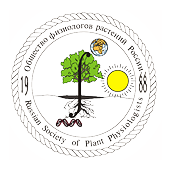Новости науки и практики // Май 2022

Plant volatiles as regulators of hormone homeostasis
Some canonical plant hormones such as auxins and gibberellins have precursors that are biogenic volatiles (indole, indole acetonitrile, phenylacetaldoxime and ent-kaurene). Cytokinins, abscisic acid and strigolactones are hormones comprising chemical moieties that have distinct volatile analogues, and are synthesised alongside constitutively emitted volatiles (isoprene, sesquiterpenes, lactones, benzenoids and apocarotenoid volatiles). Nonvolatile hormone analogues and biogenic volatile organic compounds (BVOCs) evolved in tandem as growth and behavioural regulators in unicellular organisms. In plants, however, nonvolatile hormones evolved as regulators of growth, development and differentiation, while endogenous BVOCs (often synthesised lifelong) became subtle regulators of hormone synthesis, availability, activity and turnover, all supported by functionally redundant components of hormone metabolism.
Most genes in photosynthetic organisms remain functionally uncharacterized. Here, using a barcoded mutant library of the model eukaryotic alga Chlamydomonas reinhardtii, we determined the phenotypes of more than 58,000 mutants under more than 121 different environmental growth conditions and chemical treatments. A total of 59% of genes are represented by at least one mutant that showed a phenotype, providing clues to the functions of thousands of genes. Mutant phenotypic profiles place uncharacterized genes into functional pathways such as DNA repair, photosynthesis, the CO2-concentrating mechanism and ciliogenesis. Fauser et al. illustrate the value of this resource by validating phenotypes and gene functions, including three new components of an actin cytoskeleton defense pathway.
Divergence in the ABA gene regulatory network underlies differential growth control
To establish a comparative framework for understanding how stress hormone signalling pathways diverge across species, Sun et al. studied the growth response of four Brassicaceae species to ABA treatment and generated transcriptomic and DNA affinity purification and sequencing datasets to construct a cross-species gene regulatory network (GRN) for ABA. Comparison of genes bound directly by ABA-responsive element binding factors suggests that cis-factors are most important for determining the target loci represented in the ABA GRN of a particular species.
The Rysto immune receptor recognizes a broadly conserved feature of potyviral coat proteins
Grech-Baran et al. applied structural modelling, site-directed mutagenesis, transient overexpression, co-immunoprecipitation, infection assays and physiological cell death marker measurements to investigate the mechanism of Rysto-CP interaction.
Plant responses to climate change: metabolic changes under combined abiotic stresses
Zandalinas et al. examine recent studies of metabolomic changes under stress combination in different plants and suggest new avenues for the development of stress combination-resilient crops based on metabolites as breeding targets.
Applying trait-based approaches to ecological research on mycorrhizal symbioses broadens ecological inferences, but there is no single unified framework to unite disparate language, terminology, and methods across the many multidisciplinary scientists studying mycorrhizas. Chaudhary et al. propose an inclusive framework for trait-based mycorrhizal ecology aimed to stimulate scientists around the world to collect and use more mycorrhizal trait data, particularly in understudied areas. This would widen our understanding regarding the ecological role of mycorrhizal symbioses at individual, species, community, and ecosystem scales.
Phytocytokine signalling reopens stomata in plant immunity and water loss
Stomata exert considerable effects on global carbon and water cycles by mediating gas exchange and water vapour. Stomatal closure prevents water loss in response to dehydration and limits pathogen entry. However, prolonged stomatal closure reduces photosynthesis and transpiration and creates aqueous apoplasts that promote colonization by pathogens. How plants dynamically regulate stomatal reopening in a changing climate is unclear. Liu et al. show that the secreted peptides SMALL PHYTOCYTOKINES REGULATING DEFENSE AND WATER LOSS (SCREWs) and the cognate receptor kinase PLANT SCREW UNRESPONSIVE RECEPTOR (NUT) counter-regulate phytohormone abscisic acid (ABA)- and microbe-associated molecular pattern (MAMP)-induced stomatal closure.
Importation of chloroplast proteins under heat stress is facilitated by their SUMO conjugations
Chloroplasts are hypersensitive to heat stress (HS). SUMOylation, a critical post-translational modification, is conservatively involved in HS responses. However, the functional connection between SUMOylation and chloroplasts under HS remains to be studied. The bioinformatics, biochemistry, and cell biology analyses were used to detect the SUMOylation statuses of Arabidopsis nuclear-encoded chloroplast proteins and the effect of SUMOylation on subcellular localization of these proteins under HS. PSBR, a subunit of photosystem II, was used as an example for a detailed investigation of functional mechanisms.
Spatial control of potato tuberization by the TCP transcription factor BRANCHED1b
Potato tubers are natural carbon reserves in the form of starch that have evolved to allow propagation and survival over winter. They form from stolons, below ground, where they are protected from adverse environmental conditions and animal foraging. Nicolas et al. show that BRANCHED1b (BRC1b) acts as a tuberization repressor in aerial axillary buds, which prevents buds from competing in sink strength with stolons.
Crop phenotyping in a context of global change: What to measure and how to do it
Araus et al. address spectral and red–green–blue sensing as the most popular remote sensing approaches, alongside stable isotope composition as an example of a lab-based tool, and root phenotyping, which represents one of the frontiers for field phenotyping. Further, they consider the two most promising forms of aerial platforms (unmanned aerial vehicle and satellites) and some of the emerging data-processing techniques.
Evolutionary footprint of plant immunity
Han and Tsuda summarize recent advances in the co-evolution between plants and microbes with emphasis on the plant side and point out future research needed for understanding plant-microbial co-evolution.
Anthocyanin fruit and atroviolacium confer purple pigmentation in Solanum galapagense LA1141, confirming a mechanism described for green-fruited tomatoes. LA1141 alleles cluster with red-fruited homologs suggesting an independent gain of pigmentation.
Autophagy modulates apical growth and development in the moss Physcomitrium patens
Different to root hairs and pollen tubes, Physcomitrium patens apical growing protonemal cells have the singularity that they continue to undergo cell divisions as the plant develops, allowing to study autophagy in the context of a multicellular apical growing tissue coupled to development. Pettinari et al. showed that the core autophagy machinery is present in the moss P. patens, and deeply characterized the growth and development of wild-type, atg5 and atg7 loss-of-function mutants under optimal and nutrient-deprived conditions.
https://www.biorxiv.org/content/10.1101/2022.04.19.488653v1.full.pdf
Protoplasts: small cells with big roles in plant biology: Trends in Plant Science
Compared with Agrobacterium-mediated stable transformation, which is often expensive, time-consuming, and technically challenging, plant protoplasts provide a versatile cell system for conducting plant biology research by taking advantage of its low cost, high speed, high flexibility, and convenience. So far, techniques for protoplast isolation, transfection, and incubation have been well-established in many plant species, such as arabidopsis (Arabidopsis thaliana), rice (Oryza sativa), and maize (Zea mays).
Using a simplified synthetic bacterial community (SynCom) representing the phylogenetic diversity of bacteria in the root microbiome, Türksoy et al. set out to characterize plant growth and defense metabolites when subjected to bacterial VOCs (bVOCs). Moreover, by profiling the SynCom community composition after co-cultivation with the plant, they explored how members of the community influenced each other in their growth setup.
https://www.biorxiv.org/content/10.1101/2022.04.12.488003v1.full.pdf
Jasmonic acid (JA) is a key regulator of plants defense responses. Although the transcription factor MYC2, the master regulator of the JA signaling pathway, orchestrates a hierarchical transcriptional cascade that regulates the JA responses, only a few transcriptional regulators involved in this cascade have been described. Cao et al. identified the basic helix-loop-helix (bHLH) transcription factor gene in tomato (Solanum lycopersicum), METHYL JASMONATE (MeJA)-INDUCED GENE (SlJIG), whose expression was strongly induced by MeJA treatment. Genetic and molecular biology experiments revealed that SlJIG is a direct target of MYC2.
https://onlinelibrary.wiley.com/doi/epdf/10.1111/jipb.13248
Plant responses to multifactorial stress combination
Zandalinas ad Mittler highlight the new concept of multifactorial stress combination and discuss its importance for our efforts to develop climate change-resilient crops.
Cytokinin promotes growth cessation in the Arabidopsis root
By using time-lapse imaging, genetics, and computational analysis, Liu et al. analyze the effect of cytokinin on root zonation and cellular growth. They found that cytokinin promotes growth cessation in the distal (shootward) elongation zone in conjunction with accelerating the transition from elongation to differentiation.
Elastic and collapsible: current understanding of cell walls in succulent plants
Fradera-Soler et al. summarize current knowledge of cell walls in drought-avoiding succulents and their effects on tissue biomechanics, water relations, and photosynthesis. They also highlight the existing knowledge gaps and propose a hypothetical model for regulated cell wall folding in succulent tissues upon dehydration.
https://academic.oup.com/jxb/article/73/8/2290/6529000
Новости
Новости науки и практики // Апрель 2024
Обзор научных новостей, опубликованных во всемирной паутине за последний месяцФосфорилирование плазматической мембраны H+-АТФазы Thr881 (треонин) участвует в светоиндуцированном открывании устьиц
Ученые из Университета Нагои (Nagoya University) и Института трансформирующих биомолекул (WPI-ITbM) обнаружили новый ...Научная конференция «Photosynthesis and Hydrogen Energy Research for Sustainability – 2024»
Приглашаем Вас принять участие в XII международной научной конференции


Объявления
Записей не найдено.



